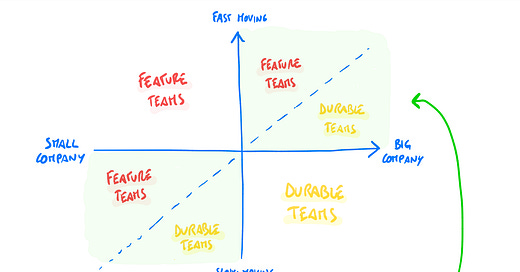Hey 👋 this is Luca! Welcome to a 🔒 weekly edition 🔒 of Refactoring.
Every week I write advice on how to become a better engineering leader, backed by my own experience, research and case studies.
You can learn more about Refactoring here.
To receive all the full articles and support Refactoring, consider subscribing 👇
Within each company, there are groups of people who are more likely to work together than others.
This is usually because of one of two reasons (or both):
They have similar skills: they check their respective work, find solutions and develop practices.
They work on the same project: they do different things, but they all contribute to a same output, so they need to coordinate.
Creating teams means defining processes that make it easier for these people to interact on a regular basis. So you want to create teams around people that work together the most often.
There exists a large body of literature on how to organize teams — based on skills (functions), projects (squads, cross-functional teams) and everything in between (matrices of various kinds).
One angle that is less frequently discussed, though, is time.
How long is the life of a team? How long are these people going to work together?
Based on this coordinate, two main configurations exist:
🎯 Feature Teams — teams assembled to deliver a specific initiative. Will be dismantled afterwards.
🎽 Durable Teams — teams accountable for a long-lived product / business area.
Choosing to go with one or the other (or anything in between) is an important decision to get right — as it has a cascading impact on almost every process: leadership role, reporting structures, career progressions, and so on.
It’s also not trivial as it depends on the stage of your company, its size, and how the business works.
I had the chance of working in both situations and each approach has its own merits, so I will add my own perspective.
Let's compare the two methods by the three coordinates that I believe are the most important:
🍱 Resource Allocation — Flexible vs Fixed
👁️ Strategy & Decision Making — External vs Internal
👑 Ownership — Weak vs Strong



